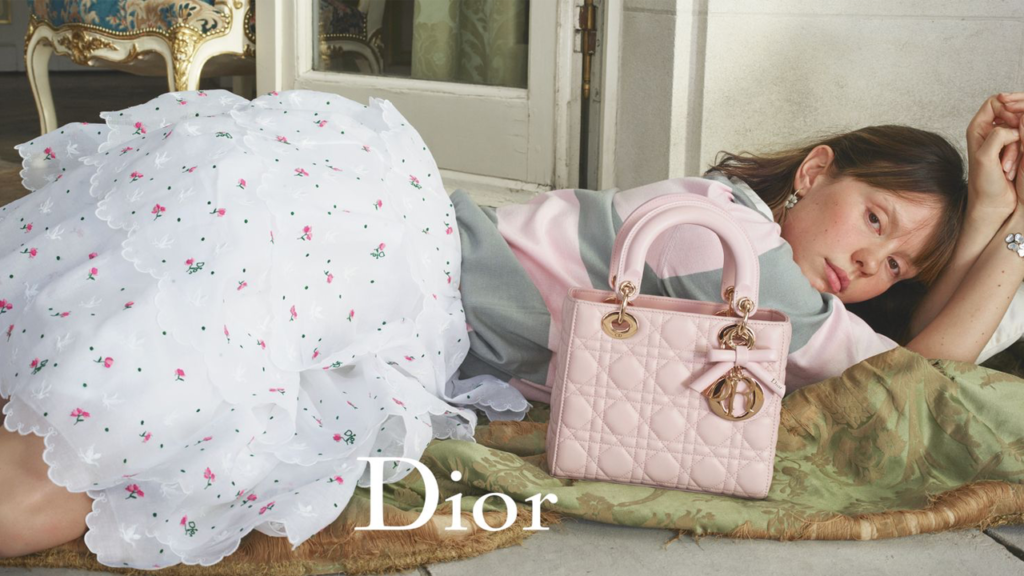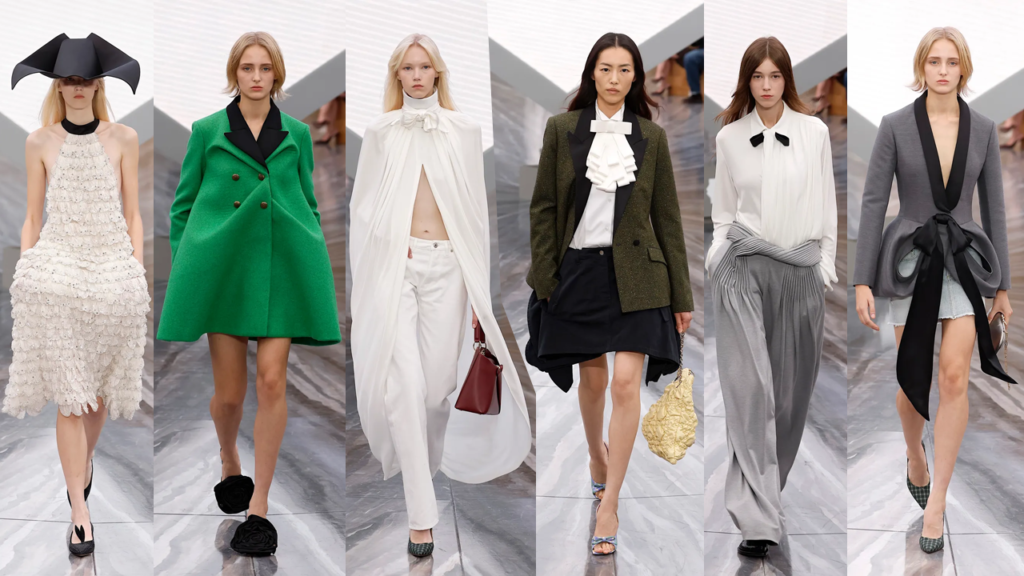When History Implodes and is Reborn in Couture
The wait was long, the expectations immense. Jonathan Anderson has finally presented his first women’s collection for Dior, SS 2026, turning the Parisian appointment into a test not only for himself but for the Maison itself. After nine years of female creative direction under Maria Grazia Chiuri, the appointment of the Northern Irish designer has brought a man back to the helm of the historic Avenue Montaigne house, along with a wealth of aesthetic codes developed over more than a decade at Loewe.
The challenge, declared from the outset, was not to erase but to filter. To insert his own voice into an already majestic chorus without silencing it or covering its melody. A constant tension, a dialogue between memory and invention: this is how Anderson’s debut can be read, met with a standing ovation that, more than a conclusion, seems to mark the beginning of a staged journey.
Guadagnino, Curtis, and the Imploding Pyramid
For his debut, Anderson did not choose sobriety but theatrical gesture. At the Jardin des Tuileries, the audience was confronted with a monumental pyramid designed by Luca Guadagnino. A white, almost sculptural surface that, for five minutes, became the screen for a film by Adam Curtis: archival images, historical fragments, and visions condensing the theme of memory as stratification.
Then, suddenly, the pyramid folded in on itself until it became an open box: not an inert container, but a symbol. Anderson suggests that Dior’s history is not to be displayed in a museum, untouchable and immobile, but to be preserved as compressed energy, ready to implode and generate new forms. The box is a living archive, imploding not to destroy but to make space for rebirth.
Here lies the conceptual key of the collection: the idea that the Maison’s past should not be simply replicated, but continuously reactivated, as a material to be transformed and reinvented.
Anderson’s Dior Language
The collection does not unfold as a linear narrative, but as a sequence of fragments, tensions, and harmonies. First look – a hand-pleated silk dress, two pieces tied with delicate knots – immediately signals the intention to blend lightness with rigor.
Bar jacket, a cornerstone of Dior’s language, is returned to its original length but softened with denim and jersey inserts. Knitwear, a leitmotif in Anderson’s work, transforms into couture-like structures, while panier skirts and draped bustiers converse with frayed miniskirts and graphic lace ensembles. The result is a play between monumentality and the everyday, with pieces that celebrate couture alongside looks that are immediately wearable.
On the runway, details emerge that reveal the designer’s personal imagination: a radical Saint Laurent collar reinterpreted as a hat, Gwen John’s abstract hydrangeas, and a micro reinterpretation of the iconic Juno dress. All of this is filtered through a painterly, contemplative color sensibility, punctuated by sudden interruptions and contrasts.


Couture as a Playground
Jonathan Anderson does not present an immediate revolution, but a thoughtful beginning. His first Dior collection does not aim to define a new direction right away, but to open up possibilities. The pieces do not appear as dogmas, but as language exercises: some more faithful to the Maison’s heritage, others more experimental, almost style experiments.
In his hands, couture is not an untouchable altar but a creative laboratory. Anderson embraces the possibility of errors or less successful attempts, knowing that innovation often arises from these moments. This approach was already honed at Loewe, where he transformed leatherwork into a field of research, making it surprising and conceptual.
At Dior, the same philosophy translates into a less intimidating, more open couture: not a uniform collection of clones, but a constellation of diverse proposals. On the runway, the rigor of the Bar jacket coexists with the lightness of silk drapes and the sharpness of denim. Not a marching army, but a multitude that tells the story of the Dior woman in many facets.
A Delicate Balance: Respect and Identity
The greatest challenge remains not to betray Dior’s monumentality, while avoiding being trapped by its grandeur. Anderson seems to move cautiously, starting the engine without accelerating. His collection does not seek shock value, but dialogue. Rather than imposing, it presents a thoughtful beginning, aware that couture requires time to adapt to a new imagination.
The standing ovation at the end of the show was not a ceremonial applause, but a recognition of a debut that honored history without being crushed by it. Anderson demonstrates respect, but also a subtle ambition: to insert his aesthetic obsessions – knitwear, volumetric play, conceptual layering – into Dior’s language, transforming heritage into fertile ground for a future yet to be written.
Dior SS26: The Beginning of a New Path
Jonathan Anderson’s debut sends a clear message: the couture of the future will not be rigid or predictable, but open and in constant dialogue with the past. Anderson does not offer definitive answers, but points to possible directions. The Dior woman of Spring/Summer 2026 can be at once sumptuous or everyday, fragile or monumental, aristocratic or ironic.
Unlike the men’s collection, here Anderson plays with disorientation and fragmentation: historical references are broken down and reinterpreted, creating new balances and new stories. The Maison’s archive is not a constraint, but a resource to implode and reactivate with creative energy.
The final applause confirms that the strategy worked: the Maison seems to have found its breath, and those who have begun with coherence and respect have already completed half the journey. Dior SS26 is not a destination, but the beginning of an exploratory phase that promises surprises for the future.




